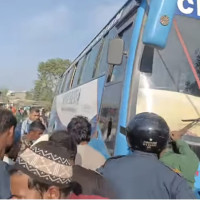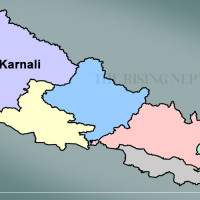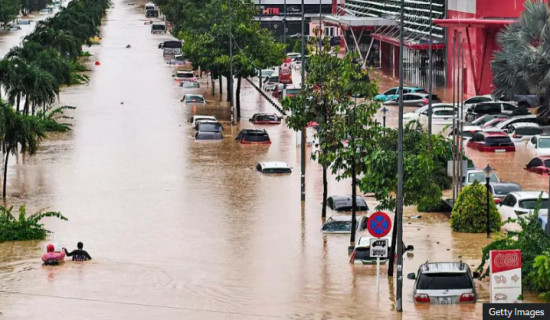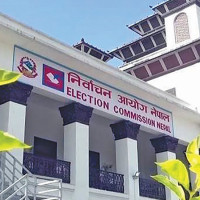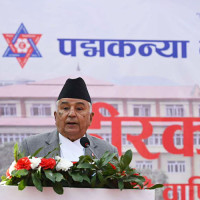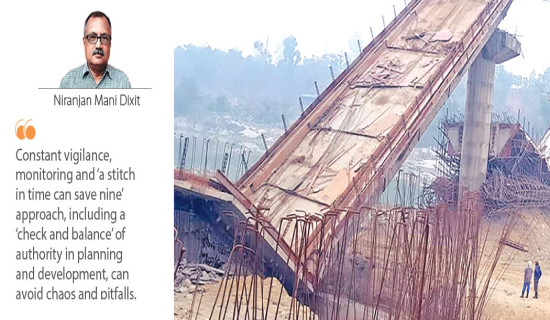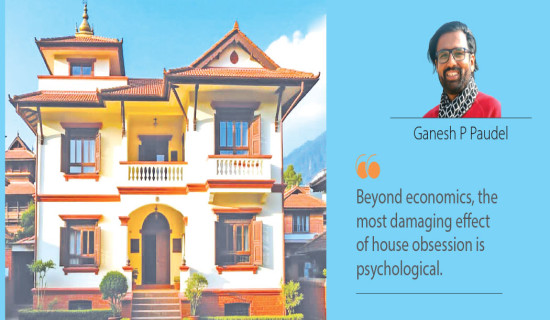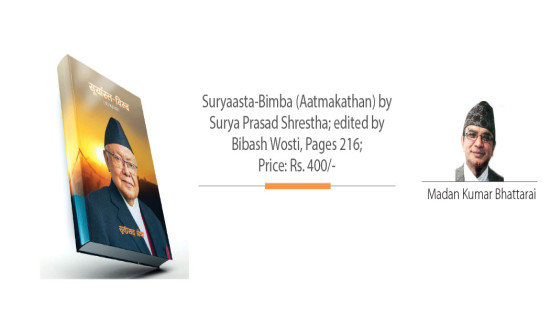- Friday, 21 November 2025
Disaster Detrimental To Public Health
People across the world experience a diverse range of risks associated with disasters and health emergencies. No county is immune to disasters and emergencies. For instance, we continue to face diverse effects of climate change on our health and livelihoods. We recently experienced heavy rains and floods, which are the most frequent type of natural disasters, causing devastation, restriction in mobility, displacement, and painful damage to personal and public properties. These events have adverse health consequences resulting in loss of life during emergencies.
Undoubtedly, excessive rains during the festive season have been severe in many ways. With many roads now impassable, the social life for many is uncomfortable. Flood-hit populations who are living in both urban and rural areas face increased risk of illness such as diarrhoea, cholera, pneumonia and infectious diseases. Therefore, the health, economic, political and societal consequences of these events can be devastating.
Risk factors
In light of the recent heavy rainfalls, it is important to understand the risk factors including poverty, gender, age, migration, displacement and health status that increase people’s exposure and vulnerability to such disasters. First and foremost, we need proactive preparedness and response to ensure the health and safety of the affected communities. Again, we must advocate for easy access to priority lifesaving health services, health systems strengthening, and mitigating health risks in the affected areas. Therefore, concerned authorities as a pressing priority, must be able to respond promptly in addressing social safety, public health threats and other hazards during disasters or emergencies.
Such disasters have disproportionate effects on poor, socially marginalised and vulnerable groups. Undoubtedly, these situations lead to social, cultural, economic and political disruption. Therefore, reducing health risks and building resilience of communities and health systems are urgent priorities for action. But often, these are easier said than done. While many communities remain highly vulnerable to a wide range of hazardous events, fragmented approaches to readiness, preparedness and response for disaster and emergency management cannot be effective and productive.
Disasters are not only natural events but also complex social phenomena shaped by cultural beliefs, practices, and historical contexts. In recent years, there has been increasing interest in understanding disasters and emergencies from an anthropological perspective, as it provides insightful observations, analysis and experiences to better understand the socio-cultural constructs of disasters and how they disrupt communities and social structures. On the surface, disaster experts and emergency management professionals tend to focus more on technical aspects of disaster response. As a matter of fact, socio-cultural context, social networks and indigenous knowledge systems of affected communities are vital but largely overlooked in many cases.
In any disasters such as earthquakes, heavy rains, floods or landslides, community-based response is key to mitigate the differential effects of these events on people who are poor and more vulnerable, such as children, women, the elderly, disabled, migrants and internally displaced. Local governments, political leaders, humanitarian agencies, civil society, health institutions, media and security forces aim to support those who are most in need of shelter, food, safe water, medicine or emergency health care. More importantly, provisions for mental health and psycho-social counseling are critical during recovery processes.
Most often, the response efforts are not effective as there is no effective coordination across stakeholders. There is no systematic attempt to listen to what people have to say. Local governments still have limited capacity for disaster preparedness and response. Rapid response teams are not readily and effectively mobilised during emergencies due to limited resources and technical capacity at the local level. Community awareness about the disasters and their implications for human health is still low in remote areas.
In most cases, there is no comprehensive disaster and emergency response plan along with an earmarked budget and other technical resources. This is one of the barriers that delays emergency preparedness and response when needed. Moreover, such a gloomy situation creates another disaster after disaster because many affected communities continue to face social sufferings and their profound impacts cannot be overlooked.
While disasters are socially embedded within a specific cultural context, the interdisciplinary approach aims to explore everyday experiences of communities and provide insights into how they understand, interpret and respond to disaster in their own indigenous ways that shape their vulnerabilities, resilience and recovery processes. Understandably, communities have their own beliefs, values and practices that influence how they perceive and respond to disaster. Social solidarity and adaptive responses can increase the resilience of communities to cope with disasters.
Divine punishment
On the other hand, there are cultural factors that affect vulnerability to disasters. For example, some communities still believe that disasters are divine punishment, which undermines the readiness for preparedness and response. Social hierarchies and gender norms are not supportive in many societies because marginalised groups face barriers and discrimination in accessing services. Similarly, women’s restricted mobility and limited decision-making power in families also increases their vulnerability as they tend to live in high-risk areas and face difficulties during evacuation.
In the disaster policy discourse or research, there is an increasing focus on complex relations between people and their environment. While people have close contact with the land, climate, plants, and animal species, ecological anthropologists argue that these elements of their environment have reciprocal impacts on people in their everyday lives. Of course, it is interesting to explore the ways people shape their environment, harness adaptive responses and lead to social, cultural, economic and political life at large.
(Bhandari is a health policy analyst interested in anthropology.)


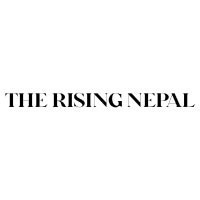
-original-thumb.jpg)
